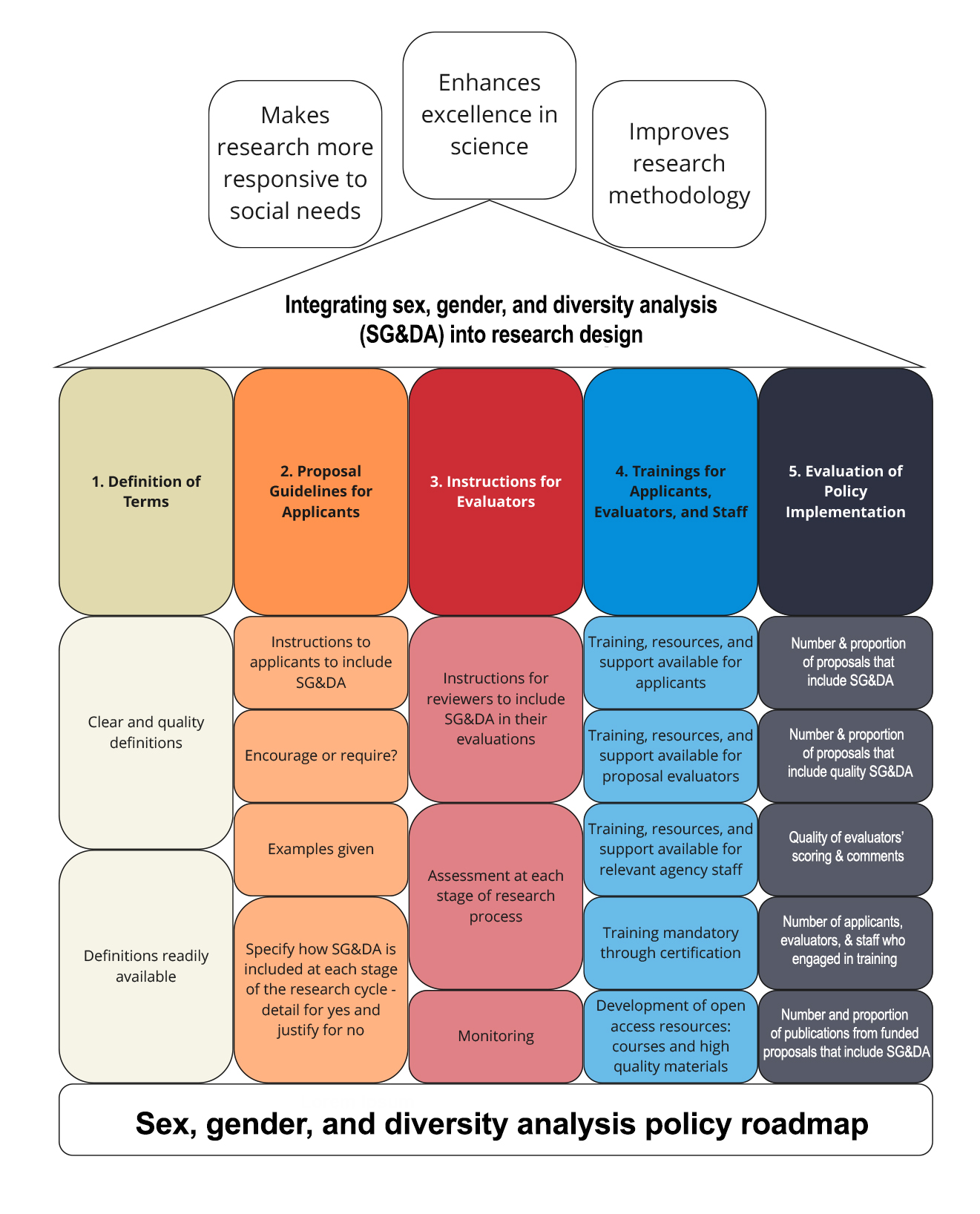Mapping Emerging Practices for Public Granting Agencies
Numerous studies and the case studies on this website document that integrating sex, gender, and diversity analysis (SG&DA) into the design of research, where relevant, can lead to discovery and improved research methodology. To realize this potential, funding agencies have implemented policies for integrating this type of analysis into the grant proposal process. (Please note that we used the term “diversity” in this roadmap rather than “intersectional” because at the time we did the study the term “intersectional” was not well understood internationally.)
Since 2012, Gendered Innovations has maintained a page listing Major Public Funding Agencies’ policies for integrating sex, gender, (and later) intersectional analysis into proposals for funding—along with links to those policies.
On this page, we present a roadmap for funders to enhance policy success. Our policy framework covers five aspects of public funding agencies’ efforts to promote SG&DA: (1) definition of terms; (2) proposal guidelines for applicants; (3) instructions for evaluators; (4) trainings for applicants, evaluators, and staff; (5) evaluation of policy implementation.
Click on each of the five sections to find emerging global policies identified in our global review of 22 publicly funded agencies across six continents and from other national agencies (Hunt et al., 2022). Standard practices, tailored as appropriate to country-specific cultures and regulatory landscapes, will enhance collaboration potential, global equity and research excellence.
Click on each of the five headings below to see emerging global practices.

Our policy framework provides a roadmap for policy implementation and evaluation. It covers five aspects of public funding agencies’ efforts to promote SG&DA: (1) definition of terms; (2) proposal guidelines for applicants; (3) instructions for evaluators; (4) trainings for applicants, evaluators, and staff; (5) evaluation of policy implementation.
If we have missed an innovative policy, please email schiebinger@stanford.edu. This is not an exhaustive list of all practices. These are examples of excellent practices that have been implemented effectively elsewhere. These may serve as models for new policy development, if relevant for your cultural context.
Works Cited
Hunt, L., Nielsen, M. W., & Schiebinger, L. (2022). A framework for sex, gender, and diversity analysis in research. Science, 377(6614), 1492-1495.



